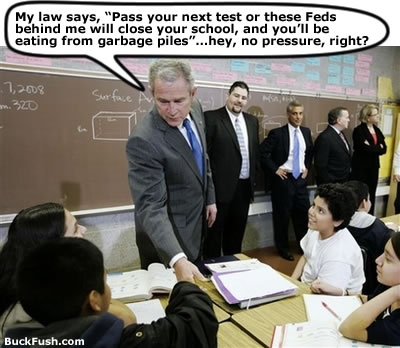Everybody Should Read This New Policy Brief: Lessons from NCLB for ESSA

In the context of President-elect Donald Trump’s promise that his education plan will be based on the ideology of increased privatization, it is refreshing and instructive to read the new research-based (seven and a half pages of footnotes for a 15 page paper) policy brief from the National Education Policy Center on Lessons from NCLB for the Every Student Succeeds Act. The style is charming and the paper non-technical. Anybody who cares about the role of the federal government in education ought to read it. It could profitably be the basis of conversation in a community group or a PTA.
Here is how its authors, Bill Mathis and Tina Trujillo begin: “If Lyndon Johnson were alive today, he would undoubtedly be discouraged to see what has become of the original Elementary and Secondary Education Act (ESEA) that he signed into law fifty years ago as part of the War on Poverty… (O)ur lawmakers have largely eroded ESEA’s original intent. Moving from assistance to ever-increasing regulation…. (a)t each step, our educational policies became more test-based, top-down, prescriptive, narrow and punitive, and federal support to build the most struggling schools’ capacity for improvement faded.”
How does the new version of the federal law, the Every Student Succeeds Act (passed last December) compare to its No Child Left Behind predecessor? “(A)t its core, ESSA is still a primarily test-based educational regime. Annual standardized testing in reading and math is still mandated in grades 3-8 and once in high school. Science testing at benchmark levels of schooling remains. The criteria for requiring schools to write improvement plans have been revised, yet standardized test scores continue to comprise the largest share of these criteria. Identification of schools in need of improvement continues to depend mostly on scores, but now also includes one or more other academic and quality indicators. Formerly rigid prescriptions for school reforms have been relegated to districts and states, although the expanded range of potential reforms still encourages and funds charter schools and requires other NCLB-like ‘corrective actions.’ State accountability systems must be federally approved and mechanisms such as turnaround-driven layoffs, conversions to charter schools, and school closures are likely to continue even though they have not been proven to consistently improve schools in struggling communities. Punishments for continued low test-performance persist. The most substantial difference is that the power to decide which test-based consequences for under-performing schools resides once again in the states, not the federal government.”
After an introduction, the short brief is organized into five sections: NCLB and ESSA: Commonalities and Contrasts—First-Order Lessons for ESSA—Lessons for State Accountability Systems—Recommendations for Policymakers and School Practice—and The Moral Imperative: Adequate Inputs and the Opportunity Gap. Whether you are a parent, a citizen, a Everybody Should Read This New Policy Brief: Lessons from NCLB for ESSA | janresseger:


